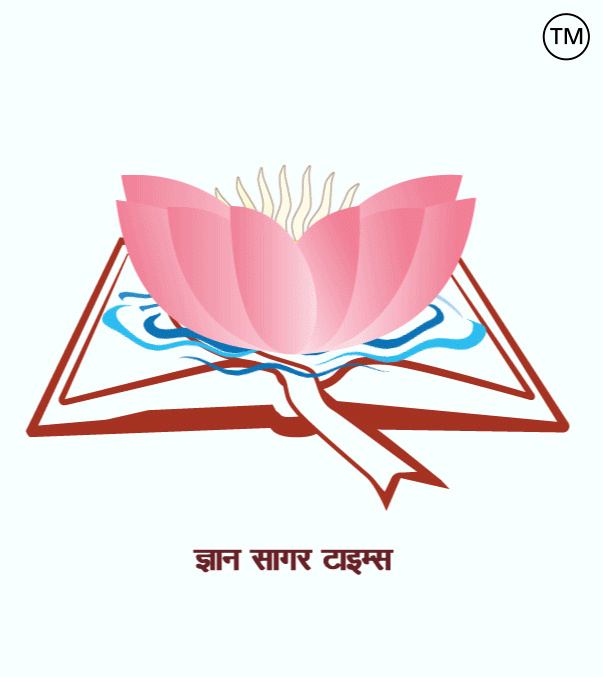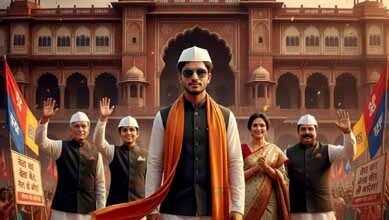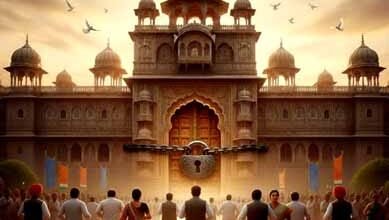
जातिवाद, मकड़जाल और विकास – भारत
भारत एक ऐसी विशाल और जटिल सामाजिक-आर्थिक प्रयोगशाला है, जहाँ सदियों पुरानी सामाजिक संरचनाएँ आधुनिक विकास के महत्वाकांक्षी लक्ष्यों से टकरा रही हैं. इस टकराव के केंद्र में हैं – जातिवाद, मकड़जाल (भ्रष्टाचार और कल्याणकारी योजनाओं के दुरुपयोग का जाल) और विकास. ये तीनों तत्व एक दूसरे से इस तरह गुथे हुए हैं कि एक के बिना दूसरे की व्याख्या अधूरी है.
जाति भारतीय समाज की वह मूलभूत संरचना है जो ऐतिहासिक रूप से व्यवसाय, सामाजिक हैसियत और अवसरों को निर्धारित करती आई है. जाति एक सामाजिक पूंजी के रूप में काम करती है. उच्च जातियों के पास ऐतिहासिक रूप से शिक्षा, भूमि और सत्ता तक बेहतर पहुँच रही है. इसके विपरीत, दलित और पिछड़ी जातियों को सदियों से शिक्षा, संपत्ति और गरिमामय जीवन से वंचित रखा गया. यह ऐतिहासिक असमानता आज भी विकास में बाधक है. एक दलित या आदिवासी युवा के लिए शिक्षा और रोजगार पाने की राह में सामाजिक भेदभाव एक अदृश्य दीवार खड़ी कर देता है.
आजादी के बाद आरक्षण की नीति एक सकारात्मक कदम थी, जिसका उद्देश्य ऐतिहासिक अन्याय को सुधारना था. लेकिन समय के साथ, यह एक जटिल राजनीतिक हथियार बन गई है. राजनीतिक दल अक्सर जाति के आधार पर वोट बैंक बनाते हैं और विकास के मुद्दों की जगह जातीय पहचान को प्रमुखता देते हैं. इससे एक “जातिवादी राजनीति” का उदय हुआ है, जहाँ विकास के वास्तविक मुद्दे पृष्ठभूमि में चले जाते हैं.
“मकड़जाल” शब्द यहाँ दो चीजों का प्रतीक है – भ्रष्टाचार का जाल और सरकारी योजनाओं के दुरुपयोग का जाल. यह एक ऐसा तंत्र है जो सरकारी मशीनरी, व्यवसाय और राजनीति के उच्च स्तरों पर फैला हुआ है. इसका सीधा संबंध जाति से नहीं, बल्कि सत्ता और पूंजी से है. यह जाल सार्वजनिक धन को निजी हितों में डायवर्ट करता है, जिससे बुनियादी ढाँचे, शिक्षा और स्वास्थ्य जैसे क्षेत्रों में विकास की गति धीमी हो जाती है. एक सड़क, एक अस्पताल, या एक स्कूल का बजट इसी जाल में फँसकर रह जाता है.
दूसरी ओर, गरीबों और वंचितों के लिए बनाई गई कल्याणकारी योजनाएँ (जैसे MGNREGA, सार्वजनिक वितरण प्रणाली, आवास योजनाएँ) एक अलग तरह का जाल बन जाती हैं. स्थानीय प्रशासन और राजनीतिक दल अक्सर इन योजनाओं को लाभार्थियों तक सही ढंग से पहुँचने नहीं देते. भूतों के नाम पर राशन निकालना, मजदूरी का गबन, और योजनाओं का लाभ लेने के लिए जाति प्रमाण-पत्रों में हेराफेरी आम बात है. यह जाल गरीब को एक निर्भरता और भय के समीकरण में फँसाए रखता है, जहाँ उसकी मूल समस्या का समाधान नहीं हो पाता.
यहीं पर जातिवाद, मकड़जाल और विकास आपस में टकराते हैं. जब एक बड़ा समूह स्वयं को सिस्टम से वंचित महसूस करता है, तो उसके भीतर “हम बनाम वे” की मानसिकता पनपती है. ऐसे में, सिस्टम को बायपास करना या उससे छेड़छाड़ करना गलत नहीं, बल्कि एक जरूरी कौशल लगने लगता है. जाति-आधारित संगठन और नेता अपने समुदाय के लोगों को सरकारी नौकरियों या योजनाओं में अनियमित तरीके से घुसाने का “काम” करते हैं. इससे भ्रष्टाचार का एक सामाजिक समर्थन मिल जाता है. जब विकास का लाभ नहीं पहुँच पाता, तो लोग अपनी पहचान के लिए जाति जैसे संस्थानों से और चिपक जाते हैं. विकास के अभाव में जाति ही सुरक्षा और पहचान का एकमात्र स्रोत बनकर रह जाती है.
राजनीतिक दल इसी डिवीजन को बनाए रखकर चुनाव जीतते हैं और सत्ता में बने रहते हैं. वे विकास के वादे करते हैं, लेकिन वास्तव में जातीय समीकरणों में उलझे रहते हैं, क्योंकि यही उनके लिए फायदेमंद है. जातिगत भेदभाव के कारण प्रतिभाशाली व्यक्तियों को उनकी क्षमता के अनुरूप अवसर नहीं मिल पाते. देश की एक बड़ी आबादी की प्रतिभा विकास की प्रक्रिया में पूरी तरह से शामिल नहीं हो पाती. भ्रष्टाचार के कारण संसाधनों का आवंटन जरूरत के आधार पर न होकर, रिश्वत और ताकत के आधार पर होता है. इससे अर्थव्यवस्था की उत्पादकता घटती है. जातिगत असमानता और भ्रष्टाचार से समाज में असंतोष, हिंसा और टकराव पनपता है, जो देश की शांति और विकास दोनों के लिए खतरा है.
इस जटिल समस्या का कोई एक सरल समाधान नहीं है, लेकिन एक बहुआयामी दृष्टिकोण ही रास्ता दिखा सकता है: – केवल साक्षरता नहीं, बल्कि एक ऐसी शिक्षा प्रणाली जो जातिगत पूर्वाग्रहों को तोड़े, नैतिक मूल्यों को स्थापित करे और कौशल विकास (Skill Development) पर जोर दे. युवाओं को रोजगारपरक बनाना ही सबसे बड़ा सशक्तिकरण है. डिजिटल इंडिया की पहल जैसे आधार, डायरेक्ट बेनिफिट ट्रांसफर (DBT) ने मकड़जाल को कम करने में सकारात्मक भूमिका निभाई है. भ्रष्टाचार रोकने के लिए और अधिक पारदर्शिता, ई-गवर्नेंस और जवाबदेही तंत्र मजबूत करने की जरूरत है.
जनता को जाति के आधार पर नहीं, बल्कि विकास के मुद्दों (रोजगार, शिक्षा, स्वास्थ्य, बुनियादी ढाँचा) के आधार पर वोट देना होगा. इससे राजनीतिक दलों को भी जातिवाद की राजनीति छोड़नी पड़ेगी. सिर्फ सरकारी नीतियों से यह समस्या नहीं सुलझेगी. समाज के प्रबुद्ध नागरिकों, मीडिया और नागरिक समाज को एक ऐसा माहौल बनाना होगा जहाँ जाति के आधार पर भेदभाव को सामाजिक बहिष्कार मिले.
जातिवाद और मकड़जाल भारत के विकास पथ पर दो ऐसे पहाड़ हैं, जिन्हें पार किए बिना सही मायने में समावेशी और टिकाऊ विकास संभव नहीं है. यह लड़ाई सिर्फ कानून और नीति की नहीं, बल्कि हर नागरिक की मानसिकता और नैतिकता की भी है. भारत की सही शक्ति उसकी विविधता में निहित है, और जब तक यह विविधता विकास के अवसरों में बराबर की हिस्सेदार नहीं बनती, तब तक “विकसित भारत” का सपना अधूरा रहेगा. इस त्रिकोण को तोड़ने की चाबी शिक्षा, नैतिक साहस और विकास-केंद्रित राजनीति के हाथ में है.
ई. हेमंत कुमार.
========== ========= ===========
Casteism, the Web, and Development – India

India is a vast and complex socio-economic laboratory, where centuries-old social structures are clashing with the ambitious goals of modern development. At the centre of this conflict are Casteism, the web (a web of corruption and misuse of welfare schemes), and development. These three elements are so intertwined that an explanation of one without the other is incomplete.
Caste is a fundamental structure of Indian society that has historically determined occupation, social status, and opportunities. Caste functions as a form of social capital. Upper castes have historically had better access to education, land, and power. In contrast, Dalits and backward castes have been deprived of education, property, and a dignified life for centuries. This historical inequality continues to hinder development. Social discrimination creates an invisible barrier for Dalit or tribal youth to access education and employment.
The post-independence reservation policy was a positive step, aimed at correcting historical injustice. But over time, it has become a complex political weapon. Political parties often build vote banks based on caste and prioritize caste identities over development issues. This has given rise to “casteist politics,” where real development issues are relegated to the background.
The term “web” here symbolizes two things: a web of corruption and a web of misuse of government schemes. This is a system that permeates the highest levels of government machinery, business, and politics. It is not directly linked to caste, but to power and capital. This web diverts public funds to private interests, slowing down development in areas like infrastructure, education, and health. The budget for a road, a hospital, or a school becomes trapped in this web.
On the other hand, welfare schemes designed for the poor and underprivileged (such as MGNREGA, the Public Distribution System, and housing schemes) become a different kind of web. Local administrations and political parties often prevent these schemes from reaching their beneficiaries properly. Withdrawing rations in the name of ghosts, embezzling wages, and manipulating caste certificates to avail themselves of benefits are commonplace. This trap keeps the poor trapped in a dynamic of dependency and fear, where their core problems remain unaddressed.
This is where Casteism, the web, and development collide. When a large group feels deprived by the system, an “us versus them” mentality develops within them. In such a situation, bypassing or manipulating the system is not seen as wrong, but as a necessary skill. Caste-based organizations and leaders work to “work” to get people from their community into government jobs or schemes through irregular means. This provides social support for corruption. When the benefits of development are not accessible, people cling even more to institutions like caste for their identity. In the absence of development, caste becomes the sole source of security and identity.
Political parties win elections and remain in power by maintaining this division. They promise development, but in reality, they remain entangled in caste equations because it benefits them. Caste discrimination prevents talented individuals from receiving opportunities commensurate with their potential. The talents of a large population of the country are not fully engaged in the development process. Corruption leads to resource allocation based on bribery and power, rather than need. This reduces economic productivity. Caste inequality and corruption breed discontent, violence, and conflict in society, threatening both peace and development.
There is no single, simple solution to this complex problem, but a multifaceted approach can offer a path: not just literacy, but an education system that breaks down caste prejudices, instills moral values, and emphasizes skill development. Making youth employable is the ultimate empowerment. Digital India initiatives such as Aadhaar and Direct Benefit Transfer (DBT) have played a positive role in reducing corruption. To curb corruption, greater transparency, e-governance, and strengthened accountability mechanisms are needed.
The public must vote not based on caste, but on development issues (employment, education, health, infrastructure). This will also force political parties to abandon caste politics. Government policies alone will not solve this problem. Enlightened citizens, the media, and civil society must create an environment where caste-based discrimination is socially ostracized.
Casteism and the web of Casteism are two crucial obstacles on India’s development path, without overcoming which, truly inclusive and sustainable development is impossible. This battle is not just about law and policy, but also about the mindset and morality of every citizen. India’s true strength lies in its diversity, and until this diversity becomes an equal share in development
E. Hemant Kumar.





